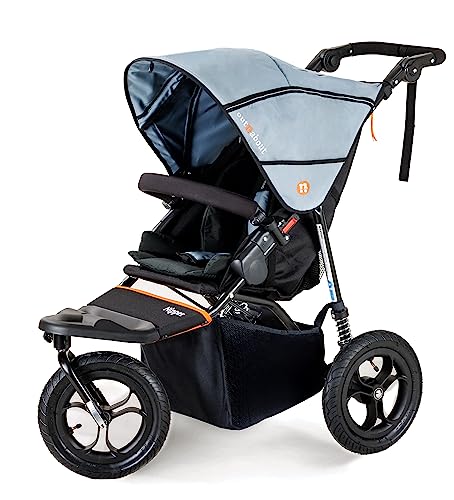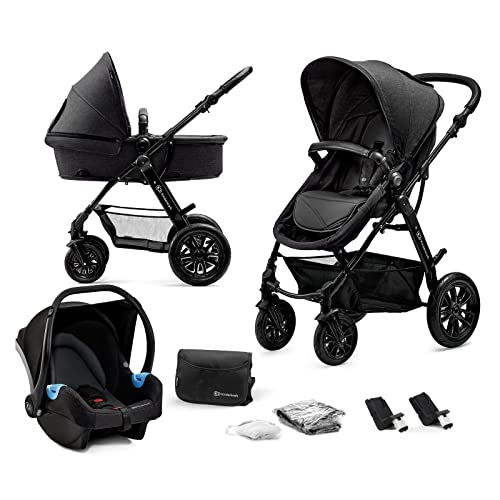10 Things That Your Family Teach You About Pushchairs From Birth
페이지 정보

본문
 Choosing pushchairs from birth - click the up coming website - For Your Baby
Choosing pushchairs from birth - click the up coming website - For Your BabyA stroller, buggy or pushchair is a way to transport infants. Prams have an a bassinet, carry cot or frame to attach an the cot. Newborns must lie flat.
When your baby is able to sit and has a good head-control, you can use the stroller that has a seat facing away from or towards you. Many come with useful features like swinging wheels or enclosed carrycots that can be utilized in 3-in-1 systems.
Rear-facing
There are many options to choose from when choosing a pushchair for a brand new baby. These include prams, buggies, pushchairs, and strollers. They may sound similar however there are some important distinctions between them. A pram is typically designed to lie flat, while a pushchair allows the ability to sit. Some babies can fit in both, but others require a carrycot until their necks and heads are strong enough to support them in a sitting position.
The majority of experts agree that it is recommended to use a pushchair with a parent's face for infants as young as the age of a few months. Babies are drawn to their parents' faces and love the connection that can be created. Eye contact is essential for their emotional development, as they learn how to process stimuli around themselves. As they watch their parents interact with each other, they also begin to develop language skills.
When babies can see their parents, it gives them a sense of security and trust. They know that they can rely on their parents to help them navigate and protect them. This early trust can boost a child's overall confidence and well-being when they grow into toddlers and explore the world on their own.
A parent-facing pushchair lets you easily monitor your child while they are in their seat. It is easy to ensure that they're comfortable and happy, and that their hat isn't dangling over their eyes or the wind isn't blowing in their face. Babies who are able to see their parents are more likely to fall to sleep, as they feel reassured by the familiarity of their faces.
There are many options available for parents who want to keep the baby in a pushchair that is facing the parent for as long as possible. Some are designed to be able to change between forward-facing and parent-facing while others come with an extendable footmuff for cold weather or a rain cover to keep the elements out. The Eezy S Twist+2 is a fantastic example of a versatile pushchair that can switch from a parent-facing model to a forward-facing seat unit with the flick of an lever. It can also be outfitted with a Cocoon S car seat, Cot S or carrycot to form the 4-in-1 Travel System.
Forward-facing
A forward-facing pushchair lets children to explore the world around them and enjoy the sights, smells and sounds around them. Baby can also view his parents, which is crucial for social development. About six months old, based on their developmental milestones and age the majority of babies are ready to transition from a newborn carrycot or pram to a pushchair that faces forward. This is when they will have developed enough head and neck control to be safe in a forward-facing position.
Research shows that when babies are facing their parents in a front-facing pushchair they are more likely to speak back and have a lower heart rate, which suggests that they feel less stressed. They are also more interested in what is happening around them and their parents, which helps stimulate their minds and improve their language skills. Parents are more likely to talk with their child if they can make eye-contact with them, which is an reassuring and soothing experience for them.
There are many advantages to using a front-facing pushchair from the moment of birth, such as being capable of using it for longer walks. It is possible to take your child with you to the grocery store and other activities that require walking. A pushchair or stroller will also let your child enjoy the same activities as their older siblings, which will aid in building their confidence and self-esteem.
Look for a pushchair with a variety of accessories such as an armband, a footmuff and pram blanket. When the weather is hot, a hood and parasol will help protect your baby. Choose a parasol which has a SPF or UV 50+ rating, and ensure that it's made to fit your pushchair and is simple to attach. Some brands offer a variety of accessories. Some may come in a bundle along with the pushchair, while others are available separately.
Many pushchairs can be converted to doubles when you add a second seat unit or carrycot. This is particularly useful for families who will be expecting another child shortly after the first. Some of these models include everything you need to convert and some include an adapter kit that can be purchased separately.
All-terrain
If you live along a country road, enjoy walks in the woods or hiking often then you'll require pushchairs that are designed for rough and rough terrain. All-terrain pushchairs are built to tackle any terrain and come equipped with features such as suspension to cushion bumpy rides for your child so they don't shake up as much. The seat is designed to disperse the force of the bumpy terrain to the head and neck of your child.
There are many all-terrain pushchairs are three-wheelers. They have an front wheel that can swivel and lock into position to ensure maximum maneuverability, which is crucial when you're on rough terrain. They also have larger tires than the typical pushchair. This means they can withstand rougher terrain, and provide the most comfortable ride for your child.
Another thing to consider when choosing an all-terrain pushchair is whether the wheels are filled with air or foam. Air-filled tyres feel smoother on rough terrain, but they do puncture more easily if you strike something sharp. Foam-filled tyres last longer and less likely to puncture, so this is a better option for an all-terrain pushchair newborn.
Many all-terrain pushchairs also convert into double mode for a growing family, and some are even used as a travel set-up with car seat adaptors, which makes them ideal options for parents with young children. Some models, like the Out 'n' About Nipper are suitable for babies due to their sloping seats and the fact that you can use a carrying cot with these models.
The Nipper also includes a variety of accessories for a pushchair such as a raincover and a footmuff. It features a one-hand compact fold and is freestanding when folded, meaning it's easy to store. It also has a 360 swivel lockable front wheel, and foam-filled never-flat tyres, which mean you don't need to worry about getting a puncture on your walks.
Weight
The right pushchair will influence your travel style and the comfort of your baby. The best model will allow your child to develop and grow in a safe and comfortable manner, while allowing you to enjoy all of the family adventures that are yet to be had. It's an investment of a large amount, so make sure that you choose the one that is suitable for your lifestyle and budget.
The first step is understanding the distinction between the pram, pushchair and buggy pushchair, and the distinctions between a travel system and a single pushchair. This guide will help parents understand the jargon and decide what is right for their new baby.
A pram, as the name suggests, is made for newborns and babies between six and six months old. It lets the baby lie flat while asleep and is beneficial for their back development. Some models also have a bassinet attachment that can be used during the first few months, giving your baby a secure and comfortable space.
Be aware, however, that not all pushchairs claim to lie flat actually do exactly that. Be wary of the manufacturers who claim that their pushchair is able to recline completely flat. Always check the fine print to find out what it really means. Some pushchairs allow only the slightest amount of recline, which is better than a fully-reclining seat.
Once your baby is old enough to sit up unassisted, it's time to transition them into the pushchair seat. It usually happens between three or four months old, however some babies will start sitting up earlier. It is recommended to purchase a pushchair that converts from a carrycot into a seat. This will give you more flexibility and keep your child safe until they are ready to go forward.
 A lightweight pushchair that has one pedal brake is frequently favored by parents, especially those who prefer to be able to talk with friends or have their hands free to carry shopping bags. Our MFM home tester Jessica gave this pushchair a thumbs up, saying "it is extremely well-handled, with a wonderful, smooth ride and the one-handed fold is a dream". The lightweight model is equipped with Tru-Ride tyres that are durable, puncture-resistant and provide high performance.
A lightweight pushchair that has one pedal brake is frequently favored by parents, especially those who prefer to be able to talk with friends or have their hands free to carry shopping bags. Our MFM home tester Jessica gave this pushchair a thumbs up, saying "it is extremely well-handled, with a wonderful, smooth ride and the one-handed fold is a dream". The lightweight model is equipped with Tru-Ride tyres that are durable, puncture-resistant and provide high performance.- 이전글Cheap Treadmills - What A Great Deal! 24.09.22
- 다음글Five Killer Quora Answers On Egg Push Chair 24.09.22
댓글목록
등록된 댓글이 없습니다.
